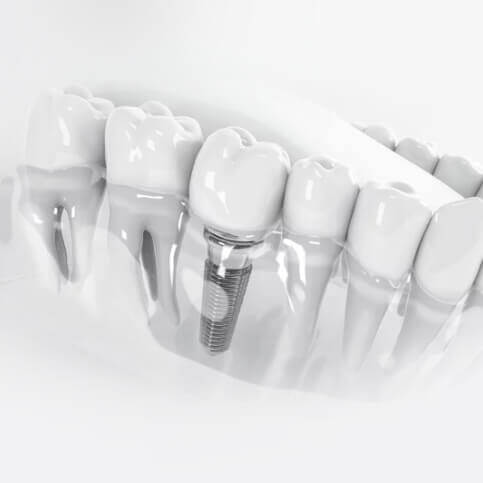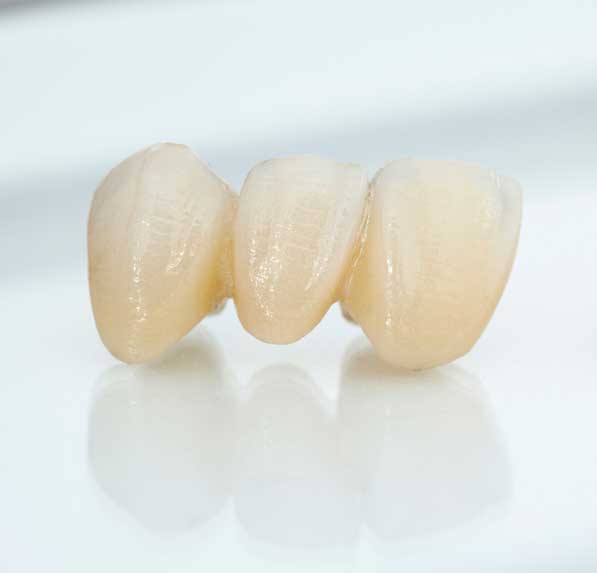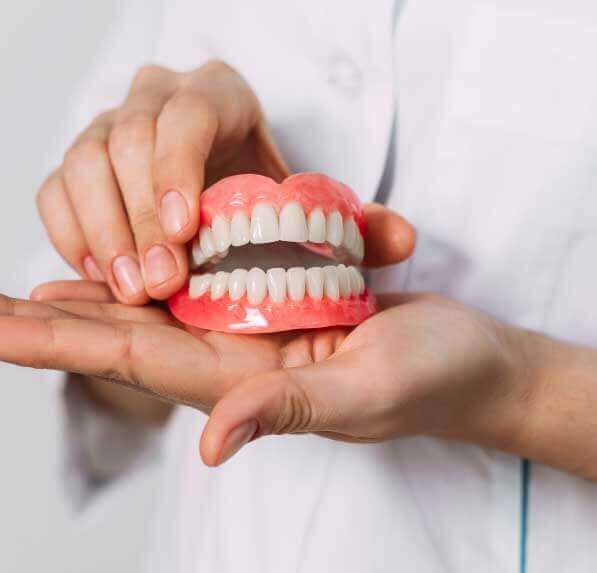The insertion of an implant (a replacement for a tooth root) is a surgical procedure performed under local anesthesia, during which the surgeon inserts the implant into the bone. After 4–6 months, when the bone healing phase around the implant is completed, the fixed-prosthetic phase follows, during which a crown, bridge, or denture is attached to the implant.
The success of the procedure is highly predictable and is an excellent choice for replacing missing teeth in individuals with excellent oral hygiene.
In our center, we exclusively use titanium and ceramic implants from the renowned manufacturer Straumann.
Advantages:


is a fixed prosthetic replacement used to bridge the gap between missing teeth. The teeth on both sides of the gap are prepared by shaping them to serve as support for the bridge. Then, an impression of the teeth is taken, which can be either digital or traditional (using impression trays and paste). Based on the impression, a dental technician manufactures the bridge using digital technology, either in full ceramic or zirconia, or as a metal-ceramic hybrid.
The bridge is then cemented onto the abutment (prepared) teeth using special dental cements, making it fixed in the mouth. They can be cemented onto natural teeth or implants (dental replacements).
are removable prosthetic replacements that replace missing teeth.
Complete dentures replace all missing teeth in the mouth along with some of the bone and mucosal structures. They restore chewing and speech functions as well as the aesthetic appearance for the patient.
Partial dentures, on the other hand, replace missing teeth unilaterally or bilaterally at the end of the dental arch and larger gaps when only a few teeth remain in the mouth. They can be made on a metal framework (removable partial/ wisil dentures) with retention elements (clasps or attachments). Another option is a metal-free PEEK framework which is a recent advancement in dentistry. They are extremely lightweight, more aesthetically pleasing, and suitable for patients allergic to dental alloys.
